
The Duke of Edinburgh has died at the age of 99, Buckingham Palace announced earlier.
The duke and the Queen were married for more than 70 years and Philip dedicated decades of his life to royal duty, serving the nation at the monarch’s side.
READ MORE: Prince Philip the Duke of Edinburgh has died aged 99, Buckingham Palace confirms
The duke became the longest-serving consort in British history and the oldest serving partner of a reigning monarch, while his wife became Britain’s longest-reigning monarch and the world’s longest-reigning still-serving monarch.
What do we know about Prince Philip?
Some thought he was arrogant, rude and insensitive; others found him witty and fun.
He could be abrupt, outspoken and was not afraid of using colourful language. He was parodied for his bad-tempered outbursts and criticised for his famous gaffes.
He was a successful naval officer – there are those who believe that, had the duke not married Princess Elizabeth, he would have been First Sea Lord – and he was also an experienced pilot.
In his leisure moments he was a good shot, a first-class polo player, an accomplished sailor, enthusiastic cricketer and international four-in-hand carriage driver.
Early days
Born at the family home, Mon Repos – allegedly on the kitchen table – on the Greek island of Corfu on June 10 1921, he was brought to Britain when he was just a year old.
Evacuated in a British warship, the blond, blue-eyed prince was carried into exile in a makeshift cot made from an old orange box.
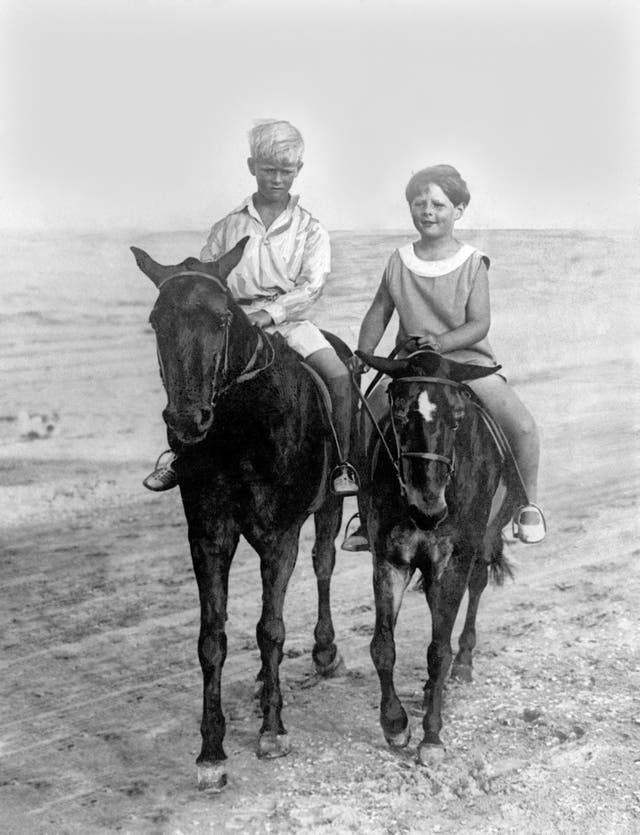 Philip (left) with his cousin, King Michael Of Romania (PA)
Philip (left) with his cousin, King Michael Of Romania (PA)
Although he was a Prince of Greece and Denmark, he had no Greek blood. His complex background was in fact Danish, German, Russian and British.
He was the youngest child and only son of Prince Andrew of Greece, an officer in the Greek Army, and Princess Alice of Battenberg.
His father was descended from kings of Denmark and Prussia, as well as emperors of Russia.
His maternal grandmother, Princess Victoria of Hesse, was a granddaughter of Queen Victoria, making him Elizabeth II’s third cousin.
Philip and the Queen were both great-great-grandchildren of Queen Victoria.
The duke’s mother was the sister of Louis Mountbatten, later Earl Mountbatten of Burma.
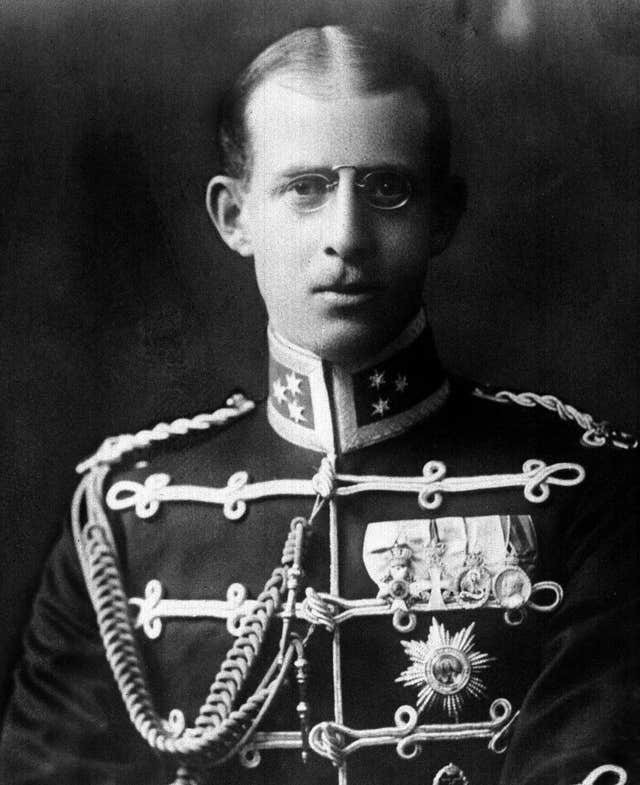 Philip’s father, Prince Andrew of Greece (PA)
Philip’s father, Prince Andrew of Greece (PA)
The family was forced to flee Corfu in December 1922 after Philip’s monocle-wearing father, a lieutenant-general in the Greek army, was arrested and charged with high treason in the aftermath of the heavy defeat of the Greeks by the Turks.
It was said he disobeyed orders and abandoned his post with his cavalry regiment in the face of attack.
King George V sent HMS Calypso and a British secret agent to negotiate his release, collect him and his wife, their four daughters and baby Philip and take them into exile.
They finally arrived in Paris, dependent on relatives for financial help.
Philip’s childhood from then on was unsettled and somewhat bleak. He was without a permanent home.
Moving between various relatives, the young prince was enrolled in a primary school in Paris before coming to Britain at the age of eight when he attended Cheam School in Surrey from 1930 to 1933.
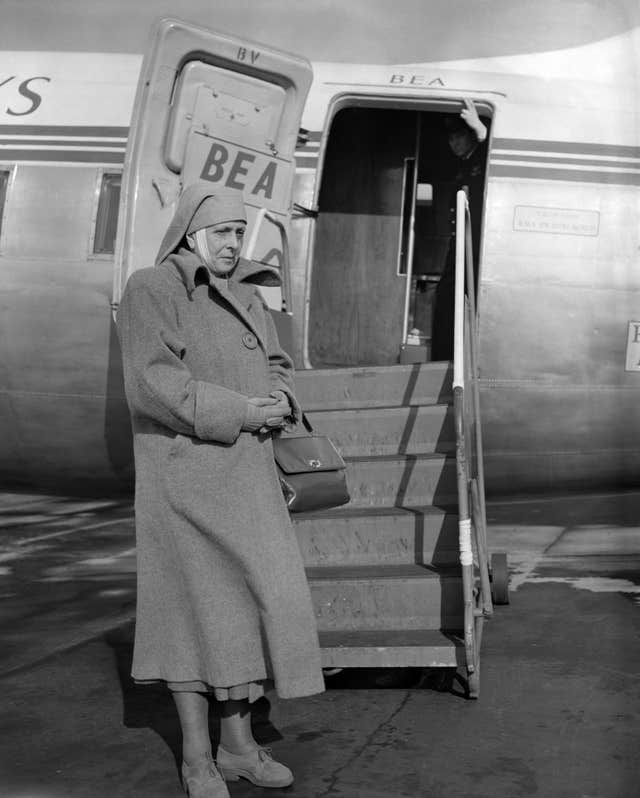 The duke’s mother, Princess Alice of Greece (PA)
The duke’s mother, Princess Alice of Greece (PA)
His parents’ relationship broke down and his father was based in Monte Carlo, where he amassed gambling debts. He died there in 1944.
His religious mother, Princess Alice, who was deaf, formed an order of nuns, but began to suffer from depression and was treated in an asylum. She died at Buckingham Palace in 1969.
In 1933, Philip moved to Salem School in Baden, Germany – all four of his sisters married German princes.
READ MORE: Nicola Sturgeon sends 'deepest condolences' to Royal Family on Scotland's behalf
The educational institution was set up by Dr Kurt Hahn, a German Jew, as a way of training self-reliant youngsters, focusing on character-building rather than classroom studying.
Dr Hahn was arrested for resisting Nazi ideas, but was freed thanks to British intervention and fled to the UK.
Philip attends school in Scotland
Philip was also back within the year and was enrolled at Gordonstoun, the new boys’ school near Elgin, Scotland, started by Dr Hahn, who had a profound influence on the prince.
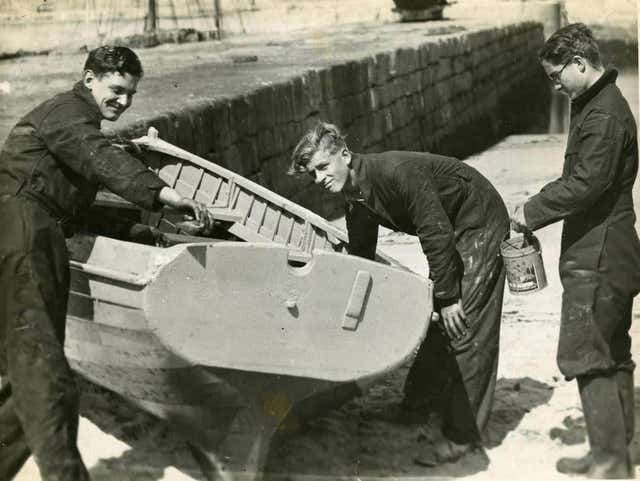 Philip (centre) at Gordonstoun (Gordonstoun/PA)
Philip (centre) at Gordonstoun (Gordonstoun/PA)
He very rarely saw his parents and was left isolated, but he was a happy, lively child. He later said of his family’s break-up: “I just had to get on with it. You do. One does.”
He thrived at Gordonstoun, captaining the hockey and cricket teams and becoming guardian (head boy) in his last term. It was there he learned to “mess about in boats”, laying the solid foundation of a future naval career.
His Uncle Dickie, Lord Mountbatten, one of Britain’s greatest seamen, took a keen interest in the prince’s progress.
Time in the Royal Navy
After leaving school, Philip joined the Royal Navy, beginning at the Britannia Royal Naval College in Dartmouth in May 1939, and was singled out as best cadet.
During the Second World War, he served on several ships – firstly on HMS Ramillies – and saw active service against German, Italian and Japanese forces.
Early in 1940, the 19-year-old prince was in action as a midshipman.
In March 1941, he was a searchlight control officer on the battleship HMS Valiant and was mentioned in despatches for his part in the battle of Matapan against the Italian fleet.
 The duke became an Admiral of the Fleet (PA)
The duke became an Admiral of the Fleet (PA)
His commanding officer said: “Thanks to his alertness and appreciation of the situation, we were able to sink in five minutes two 8in gun Italian cruisers.”
Shortly afterwards he was awarded the Greek War Cross of Valour.
When he moved up through the ranks to become First Lieutenant in the destroyer HMS Wallace (at the age of 21), he was the youngest officer in the service to have an executive job in a ship of its size.
He was present at the Japanese surrender in Tokyo Bay in 1945.
Home leaves brought invitations from King George VI to stay at Windsor Castle.
Meeting Princess Elizabeth
It was in this romantic setting that the dashing naval officer resumed his friendship with the young Princess Elizabeth.
They had been present together on various occasions, including the wedding in 1934 of Philip’s cousin, Princess Marina, later Duchess of Kent, to Princess Elizabeth’s uncle, Prince George, Duke of Kent, and at the coronation of George VI in 1937.
But it was at Dartmouth in July 1939, when King George VI and Queen Elizabeth visited the naval college with their two daughters, that Philip, then 18, and the 13-year-old Elizabeth had their first publicised meeting.
 The Duke of Edinburgh in his Navy days (PA)
The Duke of Edinburgh in his Navy days (PA)
Good-looking and blond-haired, the tall, athletic prince impressed Lilibet by jumping over the college tennis nets.
From that time they maintained a regular correspondence and met on several occasions.
Philip was invited to spend Christmas 1943 with the royal family at Windsor and, by the end of the war, newspapers were speculating about their relationship.
There was, however, some disapproval and suspicion of this foreign prince in the post-war years.
Old-school courtiers were concerned that he was not a traditional English gentleman, even though he had fought for Britain in the Navy.
But Philip and Elizabeth were already in love.
It has been suggested that they became unofficially engaged in the summer of 1946 while they were staying at Balmoral, but the official announcement was delayed until after the princess reached 21 and returned from a royal tour of South Africa.
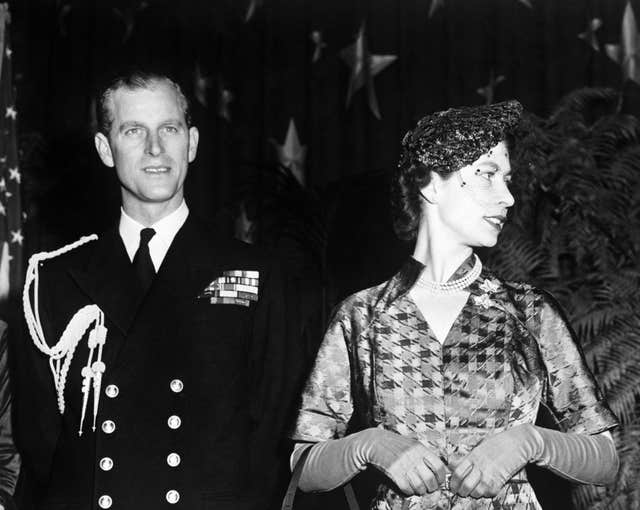 Princess Elizabeth and the Duke of Edinburgh in Washington DC (PA)
Princess Elizabeth and the Duke of Edinburgh in Washington DC (PA)
Philip applied for British nationality and in February 1947 became a naturalised British subject, renouncing his Greek royal title.
He adopted a new surname, but decided against Schleswig-Holstein-Sonderburg-Glucksburg – the family name of the Danish royal house from which his father was descended.
Instead he settled on Mountbatten, an Anglicised version of Battenberg, his mother’s family name.
The style of His Royal Highness was authorised shortly before his marriage on November 20 1947 at Westminster Abbey and he was created Duke of Edinburgh, Earl of Merioneth and Baron Greenwich, and made a Knight of the Garter.
He was accorded by the Queen the style and title of a Prince of the United Kingdom in February 1957.
Marriage
The wedding, attended by an array of foreign kings and queens, captured the public imagination in the austere post-war days of November 1947. The newlyweds were called the Fairy Princess and Prince Charming.
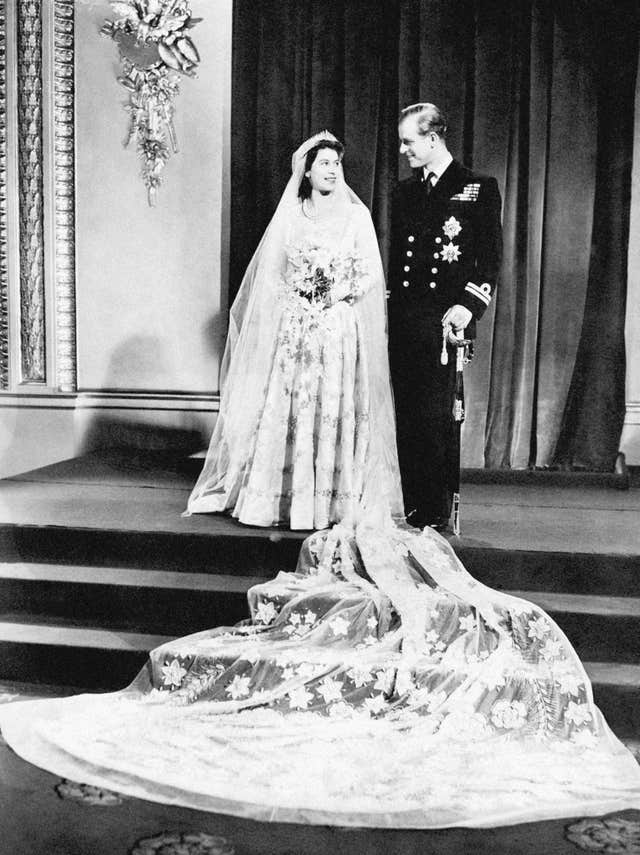 Princess Elizabeth and the Duke of Edinburgh on their wedding day (PA)
Princess Elizabeth and the Duke of Edinburgh on their wedding day (PA)
After honeymooning at Broadlands in Hampshire, home of Lord Mountbatten, and at Birkhall on the Balmoral estate in Scotland, Princess Elizabeth and the Duke of Edinburgh stayed at Buckingham Palace until renovation of their new home, nearby Clarence House, was completed in 1949.
Philip’s devotion to his wife was clear. His first ever private secretary Michael Parker, a friend from the Navy, revealed: “He told me the first day he offered me my job that his job, first, second and last, was never to let her down.”
The couple’s first child, Charles, was born at Buckingham Palace in November 1948. Anne was born at Clarence House in August 1950. Ten years later, Andrew was born at Buckingham Palace in February 1960, as was Edward in March 1964.
Philip resumed his naval career, attending the Royal Naval Staff College at Greenwich, and in October 1949 was appointed First Lieutenant and second-in-command of HMS Chequers, operating from Malta.
Elizabeth joined him there at several stages between 1949 and 1951 and had an idyllic life on the Mediterranean island, relishing the relative privacy that living abroad offered them.
Promotion to Lieutenant-Commander followed in July 1950 and, in September, Philip was given command of the frigate HMS Magpie, which he said were the happiest days of his sailor life.
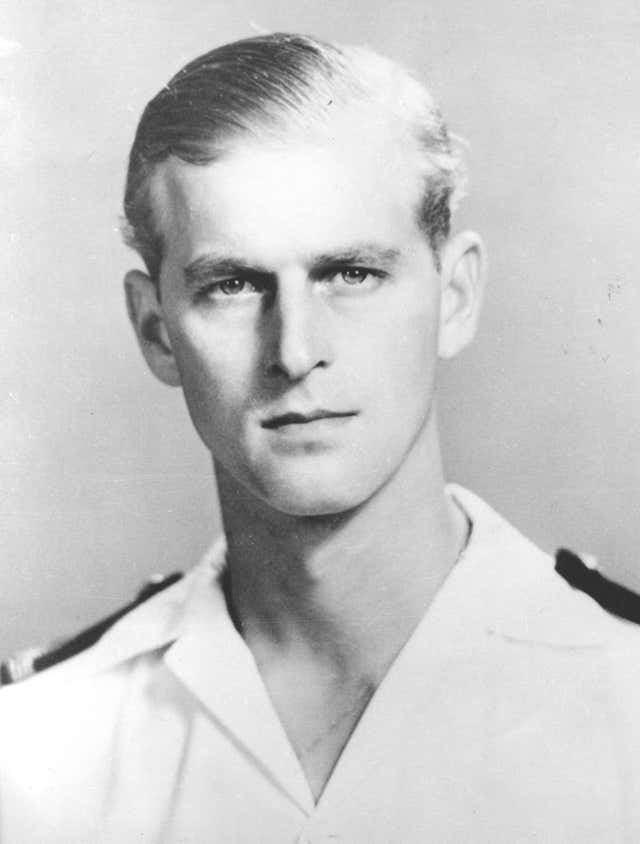 Philip as commander of HMS Magpie (PA)
Philip as commander of HMS Magpie (PA)
He was eventually promoted to Commander in June 1952 and to Admiral of the Fleet in January 1953. His other service appointments were Field Marshal and Marshal of the Royal Air Force.
Because of increasing anxiety about the King’s health, the duke was expected to take a share of royal engagements. In July 1951, it was announced that Philip would take up no more active naval appointments.
Princess Elizabeth and Philip made their first major tour together to Canada and the United States in October and November 1951, after which the duke was made a Privy Counsellor.
On February 6 1952, Elizabeth and Philip were on a tour of Kenya at Sagana Lodge after spending the night at the Treetops Hotel when a message was given to Philip that the King was dead.
An aide remarked that he looked as if half the world had fallen in on him.
He broke the news to the new Queen while they were alone. Hours later they were on their way back home.
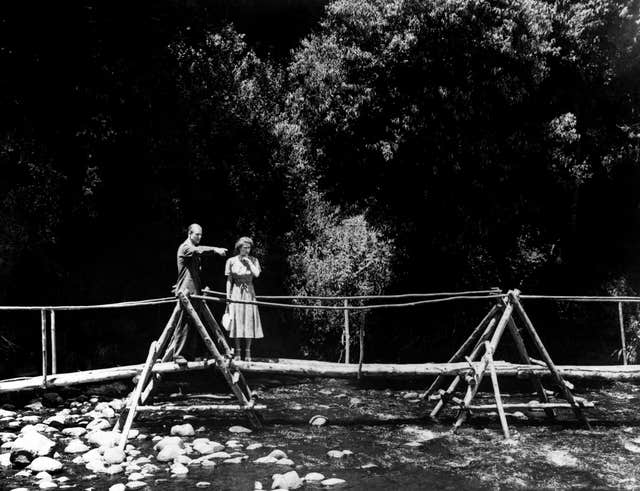 Princess Elizabeth and the Duke of Edinburgh in the grounds of the Royal Lodge in Sagana (PA)
Princess Elizabeth and the Duke of Edinburgh in the grounds of the Royal Lodge in Sagana (PA)
At the Coronation in Westminster Abbey in June 1953, the duke duly knelt to pay homage to the Queen before kissing her left cheek.
He swore to be her “liege man of life and limb”. He had no constitutional role other than as a Privy Counsellor. He saw no state papers and, although he was a member of the House of Lords, he never spoke in the chamber.
On the death of the King, with his naval career at an end, Philip’s life changed irrevocably.
He was left disappointed when the Queen declared on her accession that the royal family’s surname would be Windsor and not Mountbatten, prompting him to make the well-reported remark: “I’m just a bloody amoeba.”
There are claims that his actual protest in fact contained a number of expletives and the assertion that he was only there to provide sperm.
After the Coronation, Philip was required to play a major role both nationally and internationally.
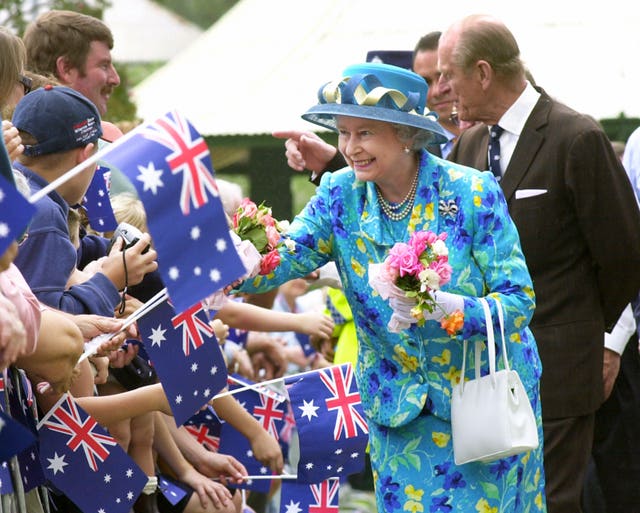 Philip joins the Queen to greet wellwishers in Australia (Fiona Hanson/PA)
Philip joins the Queen to greet wellwishers in Australia (Fiona Hanson/PA)
He accompanied the Queen on Commonwealth tours and state visits overseas, as well as on public engagements in all parts of the UK.
He also undertook many royal engagements on his own, at home and abroad. Over the years he was involved with hundreds of organisations and was often a hands-on president.
From the outset he took a keen interest in young people through such organisations as the National Playing Fields Association and the Outward Bound Trust.
In this regard, however, he was best known for the Duke of Edinburgh’s Award, which he launched in 1956, inspired by his time at Gordonstoun.
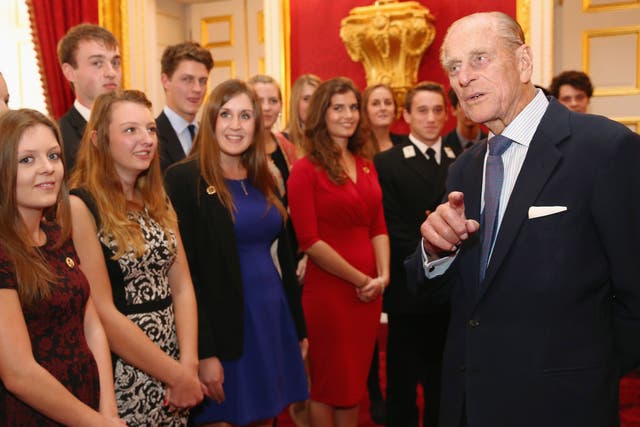 The duke speaks with a group of young people during a reception for Duke of Edinburgh Award participants (Dan Kitwood/PA)
The duke speaks with a group of young people during a reception for Duke of Edinburgh Award participants (Dan Kitwood/PA)
He took a prominent international role in the conservation of nature. He was the first president of the World Wildlife Fund-UK from 1961 to 1982, and in 1981 became the charity’s international president.
The duke took a great interest in scientific and technological research and development. He was patron of the Industrial Society and president of the British Association for the Advancement of Science from 1951 to 1953.
He also focused on housing matters and served as president of the National Federation of Housing Associations from 1975 to 1980.
He chaired the Inquiry Into British Housing which in 1991 called for the fundamental reform of housing finance, including the phasing-out of mortgage interest tax relief, in a bid to tackle homelessness and bad living conditions.
He was an accomplished sportsman, playing polo regularly until 1971 and then taking up four-in-hand carriage driving, representing Britain at several European and world championships. He also loved to shoot game.
He was president of the Federation Equestre Internationale, the Central Council of Physical Recreation, the British Amateur Athletics Board, the Commonwealth Games Federation, and of the MCC twice, in 1949 and 1975.
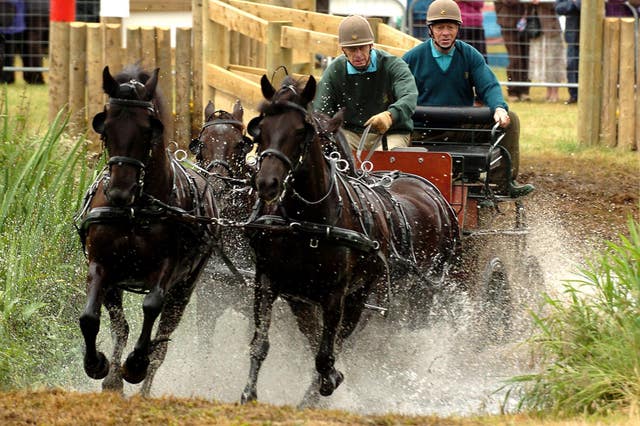 Philip competes at the Sandringham Country Show Horse Driving Trials (Chris Radburn/PA)
Philip competes at the Sandringham Country Show Horse Driving Trials (Chris Radburn/PA)
A qualified pilot, he gained his RAF wings in 1953, helicopter wings in 1956 and private pilot’s licence in 1959.
His love of the sea never waned and he competed regularly at Cowes Regatta. He was Admiral of the Royal Yacht Squadron, patron of a number of clubs and president of the Royal Yachting Association.
Philip was awarded a number of honorary degrees and fellowships. He was made a Fellow of the Royal Society in 1951, was Chancellor of Cambridge and Edinburgh Universities, and a Life Governor of King’s College, London.
He was given the task by his wife of reorganising her Balmoral and Sandringham estates, which he did with ruthless efficiency.
He set about modernising Buckingham Palace after being told to keep out of the Queen’s official duties when she acceded to the throne.
“I tried to find useful things to do,” he said of starting a footman training programme at the Palace.
Recent years
In May 2017, Buckingham Palace announced that he was soon to retire from public duties.
Philip, keen to spend more of his time doing things he enjoyed, made the decision himself, and tributes flowed in praise of his decades of royal service and unfailing support of the Queen.
A few months later, in August, at the age of 96, he carried out his final official royal engagement – with appropriate military connections – meeting Royal Marines on the Palace forecourt.
A hip replacement operation in 2018 did not prevent him attending the wedding of the Duke and Duchess of Sussex just weeks later.
His life in retirement hit the headlines in January 2019 when he miraculously escaped unscathed when the car he was driving, at the age of 97, was involved in a serious crash with a vehicle carrying a mother and a baby.
In a perfect example of his stubbornness and defiance, the duke was spotted driving without a seatbelt just 48 hours later.
But he finally brought an end to driving on public roads when he voluntarily surrendered his driving licence in the weeks that followed.
Married to the monarch for more than 70 years, the duke was at the Queen’s side when her father died and helped her through the deaths of both her mother and sister in the Golden Jubilee year of 2002.
He was there too when the Queen made history by becoming the nation’s longest-reigning monarch in 2015 – no doubt sharing her matter-of-fact view that such milestones were simply part of living a long life.
They reached their platinum wedding anniversary in November 2017 – a first for a British monarch – and the poignant personal landmark was celebrated with a black-tie party for friends and family at Windsor Castle.
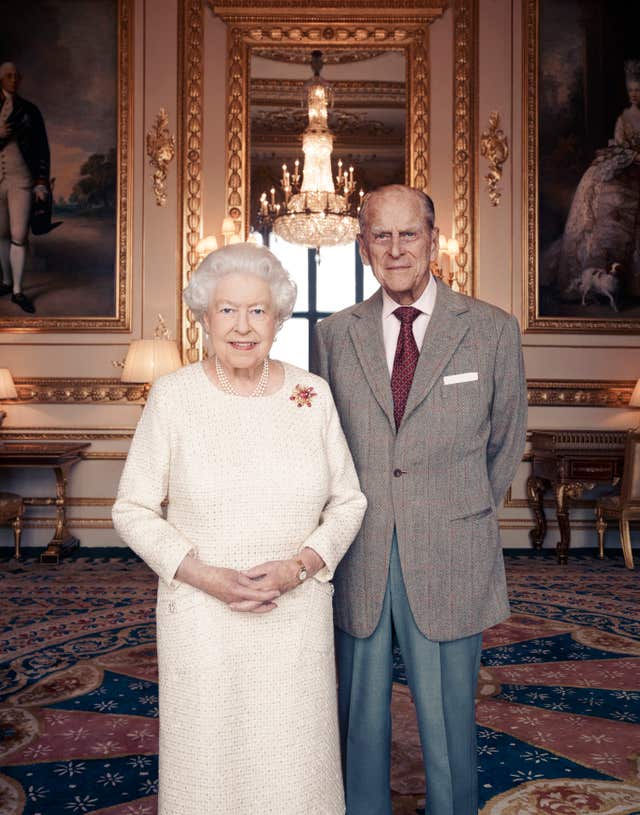 The Queen and Philip mark their platinum wedding anniversary at Windsor Castle (Matt Holyoak/CameraPress/PA)
The Queen and Philip mark their platinum wedding anniversary at Windsor Castle (Matt Holyoak/CameraPress/PA)
Amid the coronavirus pandemic, the Queen and the duke spent lockdown together at Windsor Castle, separated from their family.
He was admitted to King Edward VII’s Hospital on February 16 on a precautionary basis after feeling unwell. On March 3 he underwent heart surgery at St Bartholomew’s Hospital for a pre-existing condition.
After spending 28 nights in hospital, the duke was discharged from King Edward’s and returned to Windsor Castle.



Why are you making commenting on The Herald only available to subscribers?
It should have been a safe space for informed debate, somewhere for readers to discuss issues around the biggest stories of the day, but all too often the below the line comments on most websites have become bogged down by off-topic discussions and abuse.
heraldscotland.com is tackling this problem by allowing only subscribers to comment.
We are doing this to improve the experience for our loyal readers and we believe it will reduce the ability of trolls and troublemakers, who occasionally find their way onto our site, to abuse our journalists and readers. We also hope it will help the comments section fulfil its promise as a part of Scotland's conversation with itself.
We are lucky at The Herald. We are read by an informed, educated readership who can add their knowledge and insights to our stories.
That is invaluable.
We are making the subscriber-only change to support our valued readers, who tell us they don't want the site cluttered up with irrelevant comments, untruths and abuse.
In the past, the journalist’s job was to collect and distribute information to the audience. Technology means that readers can shape a discussion. We look forward to hearing from you on heraldscotland.com
Comments & Moderation
Readers’ comments: You are personally liable for the content of any comments you upload to this website, so please act responsibly. We do not pre-moderate or monitor readers’ comments appearing on our websites, but we do post-moderate in response to complaints we receive or otherwise when a potential problem comes to our attention. You can make a complaint by using the ‘report this post’ link . We may then apply our discretion under the user terms to amend or delete comments.
Post moderation is undertaken full-time 9am-6pm on weekdays, and on a part-time basis outwith those hours.
Read the rules hereLast Updated:
Report this comment Cancel